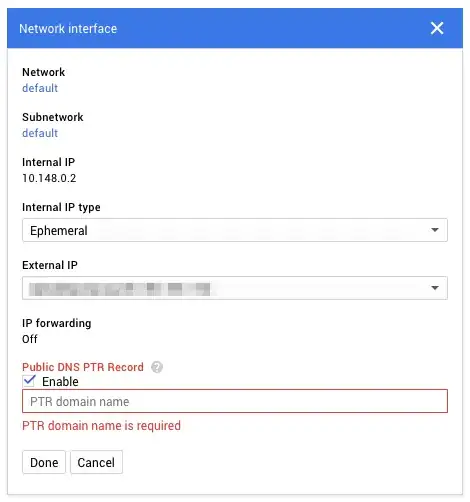I am trying to properly set up my ptr record as I have noticed that some email notifications sent from my website have gone to spam for certian people, and I am having trouble figuring out exactly what it should point to.
My website is example.com, which is a service that frequently sends out email notifications etc. My website lives on a specific dedicated IP address, let's call it 1.1.1.1. In addition to sending email notifications, all of my employees have @example.com email addresses, we use google apps for this.
I have created an SPF record for my domain, which basically authorizes, google's mail servers to send email, as well as my web server, which lives on 1.1.1.1. However, I am unclear as to how to set up the PTR record.
It is MUCH more important for me that the notifications from my website are not flagged as spam vs. the emails that are sent by my employees through google apps.
Should I simply set up an a record in my DNS called ptr? And point ptr.example.com to 1.1.1.1, and then create a ptr record for 1.1.1.1 and point that to ptr.example.com?
Thanks in advance.
